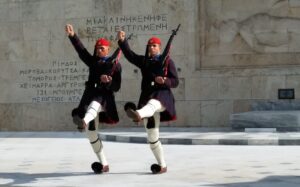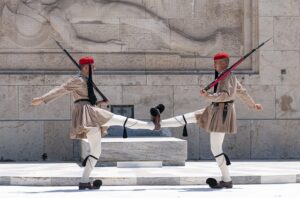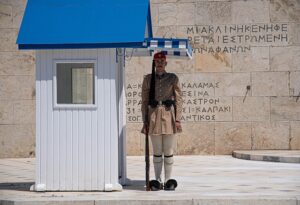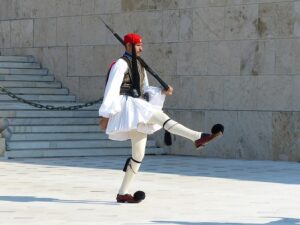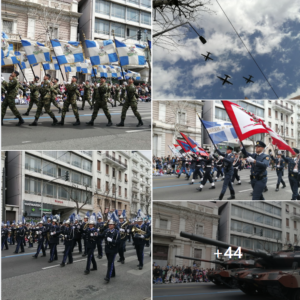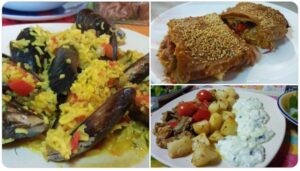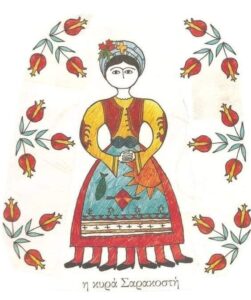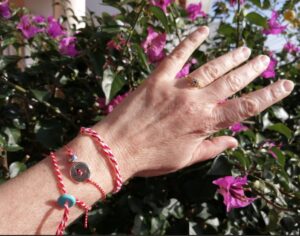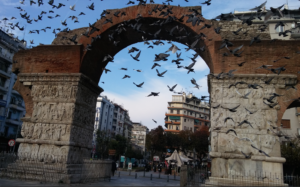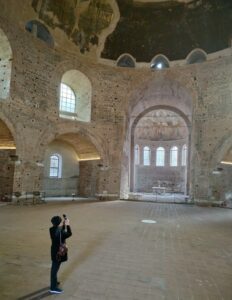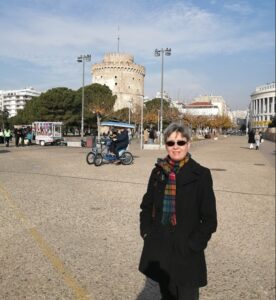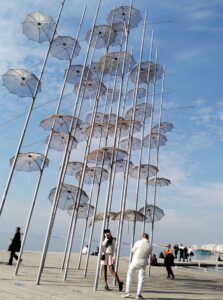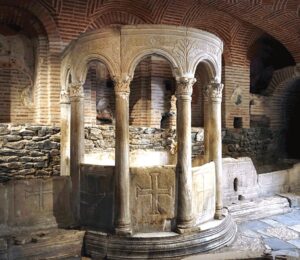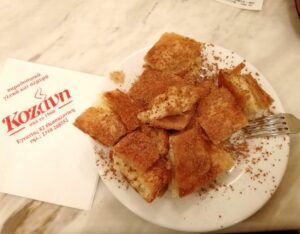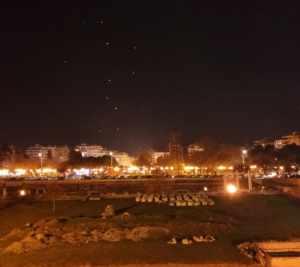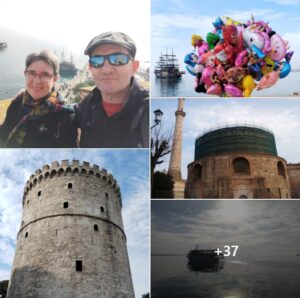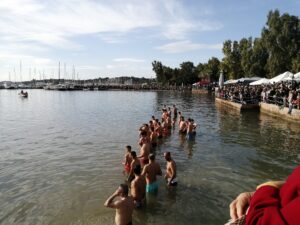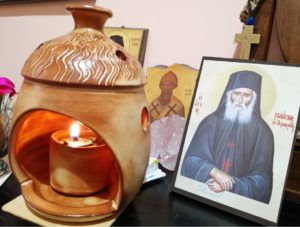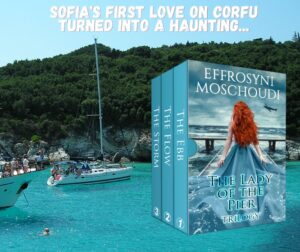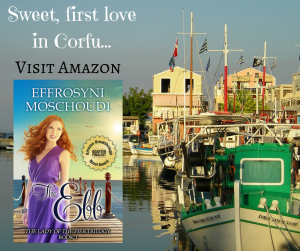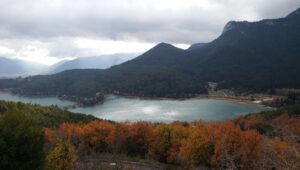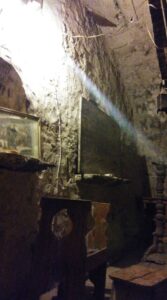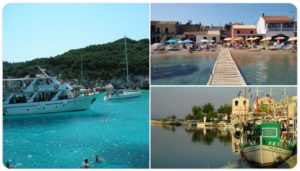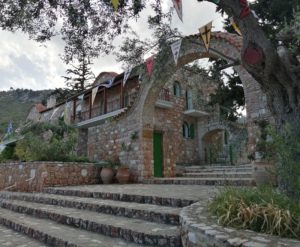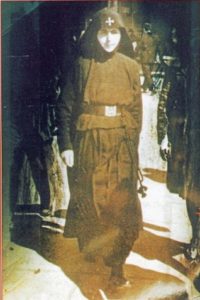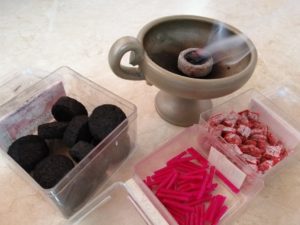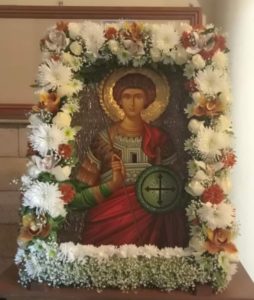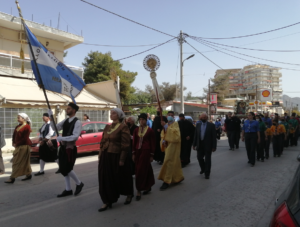Hi, All! Today I am posting photographs and videos from the Athens military parade on March 25, which is Greek Independence Day. But first, I thought I’d introduce to you to the ‘stars’ of the parade – the Evzones – which are the soldiers of the Greek Presidential Guard.
If you’ve been to Athens, chances are you have visited the monument to the Unknown Soldier before the Greek parliament (Syntagma) and have seen the changing of the guard performed by the Evzones. Their well-balanced moves are made with clockwork precision that make them look like mechanical soldiers in a toy display. It’s absolute perfection. As a youngster, I was always impressed by how easy they found it to remain absolutely still and silent as they stood at their posts even when the tourists approached to speak to them and take photos.
The ‘Evzon’ (singular form of ‘Evzones’), also known as ‘Tsolias’, is the name of the soldier of the Greek Presidential Guard. And even though you may be familiar with the peculiar uniform that sports a skirt, a fez, and pom pom shoes, how much do you know about its history and symbolisms?
Fret no more, as I am about to tell you all about it 🙂
The first mention of the word Evzones was made in Homer’s Works, 3,000 years ago, when he praised the bravery of the Myrmidones, the army of Achilles. Homer referred to them as ‘Evzones’, a word that means ‘Well-suited with a belt’.
Today, the Evzones uniform is a revered symbol of the heroism of the Greeks who have fought for their country since the Greek War of Independence in the 1820s.
The Greek young men in the Presidential Guard have all been hand-picked to serve as guards at Syntagma as well as at Maximou (the Presidential Residence). It is regarded as a huge privilege to a Greek family to have their son serve in this unit instead of getting sent off to the Army, Air Force or Navy somewhere to fullfill their military duty.
The selection criteria are very strict. The army picks the tallest men they can find, for one, but that’s not all. The men have to have high ethics, a good character, and to be able to pass the necessary training, of course. A sense of reverence towards the uniform and what it represents is a must.
There are a couple different shades of the uniform that the Evzones may wear, depending on the season, as some fabrics are warmer than others. In this post, you can see brown and blue shades, but the classic uniform is the one with the white shirt and the blue/golden vest. This is the one the Evzones wear during the annual military parade in Athens.
The Presidential Guard are often invited to other parts of the world, such as the USA (New York) or Australia, and they bring untold joy to the Greeks who live there and celebrate March 25 far away from their motherland. It is certainly an experience to have them march past you. And if you’re a Greek, it’s often a case of looking hard to find a dry eye after. Not an easy task!
Here are a few details of the uniform and what it represents, so you can get an idea why it is so revered by the Greeks:
The fez hat of the Evzon, made of red felt, represents the blood shed in the wars by those who sacrificed their lives for freedom. The long black tassle symbolizes the tears and the mourning of the Greeks during the slavery they suffered under the Ottoman Empire for 400 years.
The white shirt has large open sleeves and the vest has exquisite traditional and folklore designs. They are handwoven with golden and white threads.
The pleated skirt is made with white fabric that’s 30 meters long. The pleats are 400, as many as the years of slavery the nation endured under the Ottoman Empire. In the old days, this skirt was worn by Greek men in many parts of the country such as Attica and the Peloponnese. Every year that passed in slavery the Greeks would secretly add one more pleat to the skirts in rememberance.
The white leggings of the Evzon uniform are made of wool.
The accessories in the uniform include black knee bands, cartridge pouches, blue and white silk fringes that symbolize the Greek flag, and, of course, the characteristic ‘tsarouchi’ shoes, that are fitted with pom poms.
In the old days, the pom poms had a practical use. They helped farmers and other outdoor workers to protect their toes from the cold weather and the snow and to keep the shoe waterproof.
The ‘tsarouchi’ shoes in the Evzones uniform are handcrafted, made with hard red leather, and each shoe is fitted with 60 nails! One pair weighs about 3 kilos.
These shoes offer a compelling metallic sound when the Evzones walk. The sound becomes awe-inspiring during the annual Athens military parade on March 25 when the Presidential Guard parades down the highway before Syntagma square. The Evzones march slowly and stomp their right feet on the ground. The collective sound from the shoes reverberates all around, bringing chills to the spine and causing the onlookers to erupt in enthusiastic applause.
Take a look for yourself in this short video from the Athens military parade. Other than the Evzones, you will see the officers parading on the front wearing red vests, red pants and gilded boots. They hold 1820s long swords instead of rifles. The other costumes you will see with high boots and breeches represent the heroes who fought for their independence on the islands (like Hydra, Spetses and Crete). The Cretan costume is all black.
Turn up the volume and enjoy!
Hurrah! I had the pleasure to attend the annual military parade this year. Go here to see my photos. You will see massive tanks, drones, firefighters, Navy Seals, and lots more! While we watched, military planes kept flying overhead and I managed to catch a few while filming the parade in this short video. Enjoy!
OOPPAAA! SIGN UP TO MY BIMONTHLY NEWSLETTER AND GET 3 BOOKS FROM ME AS A WELCOME GIFT! SEE BELOW FOR THIS OFFER!
YOU KNOW WHAT THEY SAY… SHARING IS CARING! Tweet this to spread some love:
Athens military parade and the symbolisms of the Greek Presidential Guard #Greek #military #Greece Click To Tweet

Hey, before you go! In my latest newsletter, I am sharing a plethora of FREE kindle books! Check it out here
Emilia wished to be young again. And then it happened…
The Song of Youth is coming on Amazon soon! Find out more here!
Get Effrosyni’s FREE books with your signup to her bimonthly newsletter! Fun news from her life in Greece and a load of FREE kindle books in every issue! http://bit.ly/2yA74No
Clean romance short read, FREE with Kindle Unlimited. It’ll transport you straight to Corfu to experience summer in an idyllic Greek seaside village. Visit Amazon
Kelly ran a marathon in Nafplio and wound up running a house. With a ghost in it! Both humorous and moving, with tantalising clean romance, it’s just the ticket to lose yourself reading! Read more on Amazon
Kate has a guardian angel. She just doesn’t know it. Plus, she’s falling for him. Delightful paranormal romance set on the idyllic island of Sifnos. The descriptions of Greek food will make you feel ravenous. Don’t read when hungry. You’ve been warned! OOOPPPPAAAAAA! Get it now on Amazon

Beach fun and sweet romance mixed with magic spells and bird shifters… The Raven Witch of Corfu is an original story that will rivet you with its unrelenting suspense. The final twist will blow your mind!
Available in paperback , box set or 4 kindle episodes!
Planning to visit Greece? Check out our FREE guide to south Corfu!
For delicious Greek recipes, go here. Are you an author? Check out our FREE promo tips & resources here.

